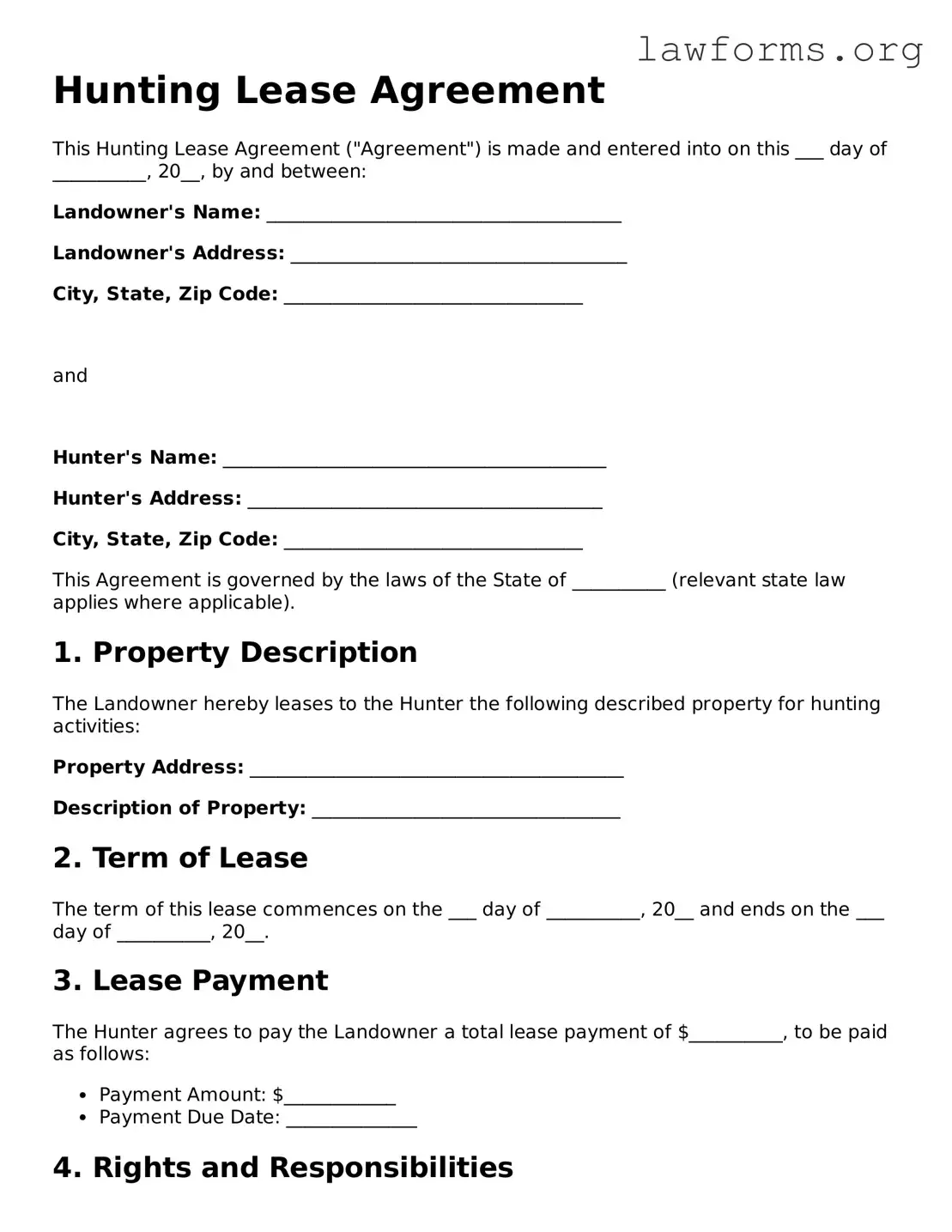Hunting Lease Agreement
This Hunting Lease Agreement ("Agreement") is made and entered into on this ___ day of __________, 20__, by and between:
Landowner's Name: ______________________________________
Landowner's Address: ____________________________________
City, State, Zip Code: ________________________________
and
Hunter's Name: _________________________________________
Hunter's Address: ______________________________________
City, State, Zip Code: ________________________________
This Agreement is governed by the laws of the State of __________ (relevant state law applies where applicable).
1. Property Description
The Landowner hereby leases to the Hunter the following described property for hunting activities:
Property Address: ________________________________________
Description of Property: _________________________________
2. Term of Lease
The term of this lease commences on the ___ day of __________, 20__ and ends on the ___ day of __________, 20__.
3. Lease Payment
The Hunter agrees to pay the Landowner a total lease payment of $__________, to be paid as follows:
- Payment Amount: $____________
- Payment Due Date: ______________
4. Rights and Responsibilities
- The Hunter shall have the right to enter the property for hunting purposes.
- The Hunter shall comply with all state hunting laws and regulations.
- The Hunter shall maintain the property in good condition.
- The Landowner reserves the right to access the property at any time.
5. Indemnification
The Hunter agrees to indemnify and hold harmless the Landowner from any claims, damages, or injuries arising from the Hunter’s use of the property.
6. Termination
This Agreement may be terminated by either party with written notice of at least ___ days prior to the termination date.
7. Additional Terms
Any additional terms and conditions may be outlined here:
______________________________________________________________
______________________________________________________________
8. Signatures
By signing below, both parties agree to abide by the terms of this Hunting Lease Agreement.
Landowner's Signature: ___________________________ Date: __________
Hunter's Signature: ____________________________ Date: __________
This document serves as a binding agreement between both parties and reflects their commitment to respect the conditions set forth herein.
